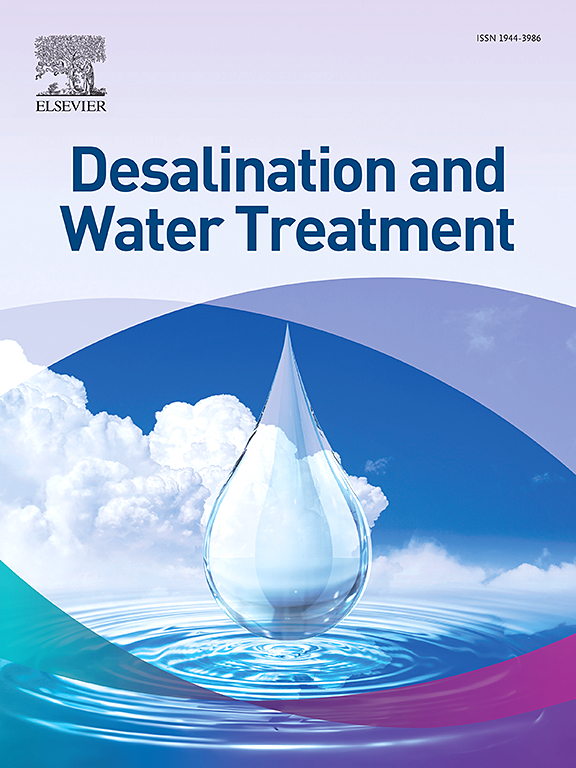Coupling nutrient removal and biodiesel production by cultivation of Chlorella sp. in cafeteria wastewater: assessment of the effect of wastewater disinfection
IF 1
4区 工程技术
Q4 ENGINEERING, CHEMICAL
引用次数: 0
Abstract
Cultivation of microalgae using wastewater as nutrient resource is a promising strategy to reduce the microalgae biodiesel production cost and increase nutrient recovery in one step. However, the inhibitive effect of indigenous bacteria on microalgae could negatively affect microalgal growth. Thus, in this study, the effect of wastewater disinfection methods on the growth and biochemical composition of Chlorella sp. and the nutrient removal efficiency in cafeteria wastewater was eval- uated. Results showed a significant increase in the microalgal density and a reduction in bacterial abundance in the disinfected wastewater. Moreover, chemical oxygen demand removal ranging from 83.53%–87.16% was achieved in 15-d incubation and complete removal of total nitrogen and total phosphorus was achieved after 6 d of incubation. The total carbohydrate, protein and fatty acid contents in the harvested biomass were 128.49–139.33, 43.24–56.14 and 17.34–23.58 mg·g –1 on dry weight basis, respectively. Palmitic acid, palmitoleic acid, stearic acid and oleic acid accounted for more than 90% of the total fatty acids in the biomass, indicating great potential as an alternative feedstock for biodiesel production. This study provides a simple and efficient disinfection strategy to enhance Chlorella sp. growth and biomass production for biodiesel production.小球藻培养在食堂废水中耦合去除营养物和生产生物柴油:废水消毒效果评价
以废水为营养源培养微藻是降低微藻生物柴油生产成本和提高营养物回收率的有效途径。然而,本地细菌对微藻的抑制作用可能会对微藻的生长产生负面影响。因此,本研究评价了污水消毒方法对食堂废水中小球藻生长、生化组成及营养物去除效率的影响。结果表明,消毒后的废水中微藻密度显著增加,细菌丰度显著降低。15 d的化学需氧量去除率为83.53% ~ 87.16%,6 d的化学需氧量去除率为全氮、全磷。收获生物量的总碳水化合物、蛋白质和脂肪酸含量分别为128.49 ~ 139.33、43.24 ~ 56.14和17.34 ~ 23.58 mg·g -1(干重)。棕榈酸、棕榈油酸、硬脂酸和油酸占生物质总脂肪酸的90%以上,作为生物柴油生产的替代原料潜力巨大。本研究为促进小球藻生长和生物柴油生产提供了一种简单有效的消毒策略。
本文章由计算机程序翻译,如有差异,请以英文原文为准。
求助全文
约1分钟内获得全文
求助全文
来源期刊

Desalination and Water Treatment
工程技术-工程:化工
CiteScore
2.20
自引率
9.10%
发文量
0
审稿时长
5.3 months
期刊介绍:
The journal is dedicated to research and application of desalination technology, environment and energy considerations, integrated water management, water reuse, wastewater and related topics.
 求助内容:
求助内容: 应助结果提醒方式:
应助结果提醒方式:


